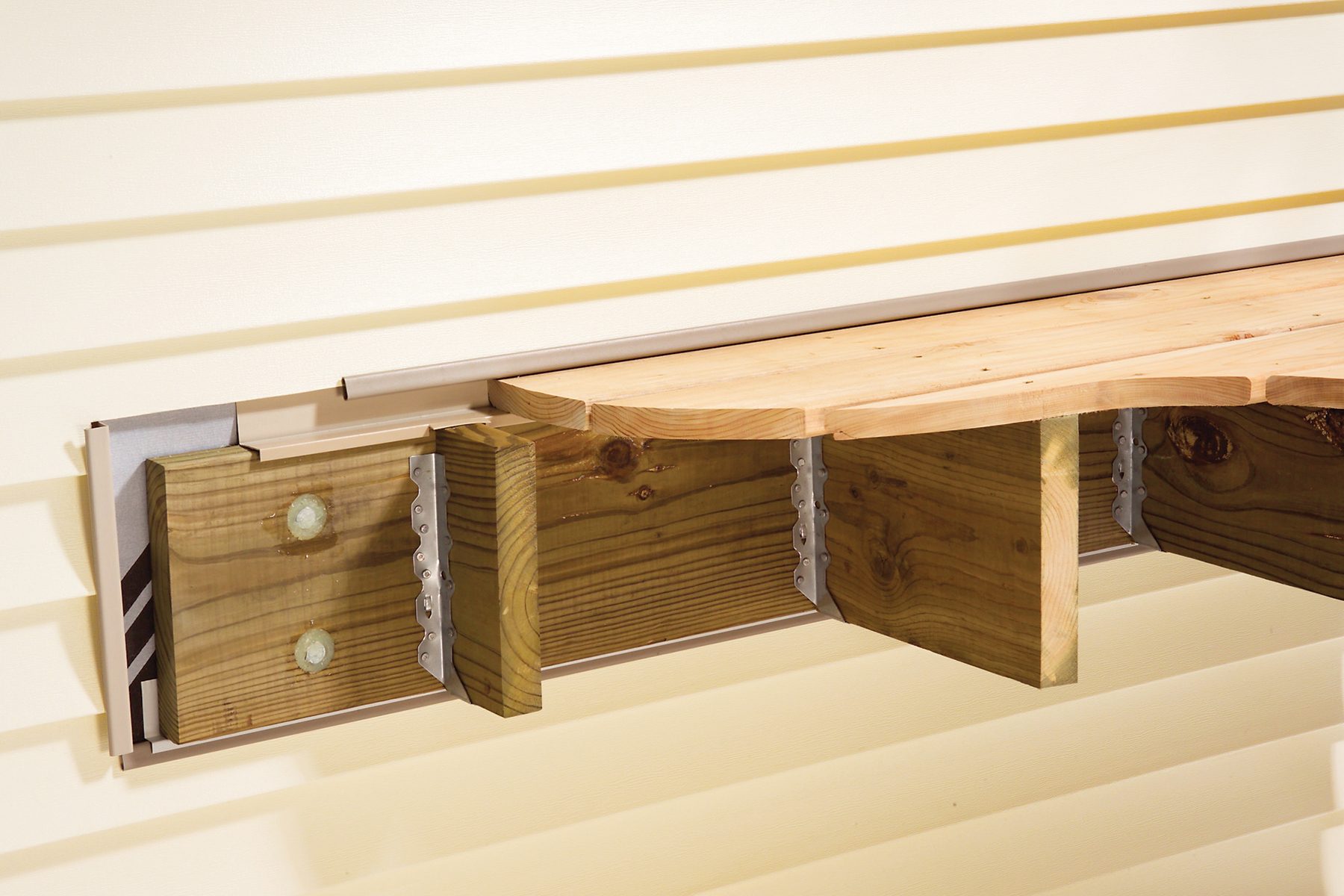Here's the right way to do it
Introduction
Removing the vinyl siding and installing flashing with your ledger board will protect your home from moisture damage.
Tools Required
- Circular saw
- Cordless drill
- Drill bit set
- Framing square
- Level
- Miter saw
- Safety glasses
- Socket/ratchet set
- Tin snips
- Utility knife
Materials Required
- Aluminum nails
- Bolts
- Drip flashing
- J-channel
- Ledger board
- Silicone caulk
- Undersill trim
- Z-flashing
Project step-by-step (1)
Attaching a deck ledger board to a vinyl-sided house requires a few extra trim pieces to keep water from leaking behind the siding. Here’s a rundown of the materials and procedure.
Installing the flashing
Prep
Have the necessary tools for this DIY project lined up before you start—you’ll save time and frustration. You’ll need a zip tool to remove vinyl siding.
Make your outline
Start by making an outline on the siding where you want to position the ledger board. Make the outline large enough to include space for the deck boards on top, the ledger and any trim boards on the sides. Then cut away the siding.
Nail undersill trim
Nail undersill trim (J-channel will also work) over the bottom cut using 11-gauge aluminum nails. It’s a tight fit to drive the nails into the undersill, but you can gently pull back the siding, then tuck it into the undersill after you nail it. If necessary, remove a few pieces of siding, nail the undersill, then replace the siding.
Tack Z-flashing over the channel
Tack Z-flashing over the channel, extending it slightly past the cutout on both sides. If you need two or more pieces of flashing, overlap the joints by 4 in. and seal with silicone caulk. Avoid using galvanized flashing with ACQ treated lumber because it can cause corrosion.
Tack the ledger in place
Nail J-channel along both sides of the cutout. Then tack the ledger into place with 16d nails. Next, slide drip flashing behind the vinyl so the lip fits over the top of the ledger as shown at right. Install undersill trim along the edge of the vinyl, over the flashing at the top and bottom.
Attach the ledger to the house
Then lag-screw the ledger to the house using the fastener pattern approved in your plan. A building inspector we talked to said that incorrectly installed ledgers are the main cause of problems in do-it-yourself decks because the ledger may pull loose from the house. Make sure to get a building permit before starting a deck project so the inspector can check the ledger installation. It’s extremely important for the ledger to be firmly attached.
Finish with calk
Finally, caulk around the bolt heads to seal the holes against moisture.





















